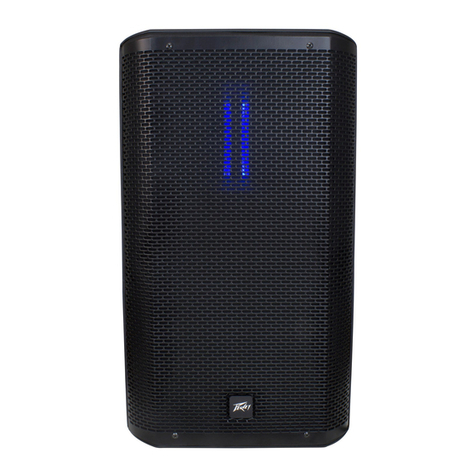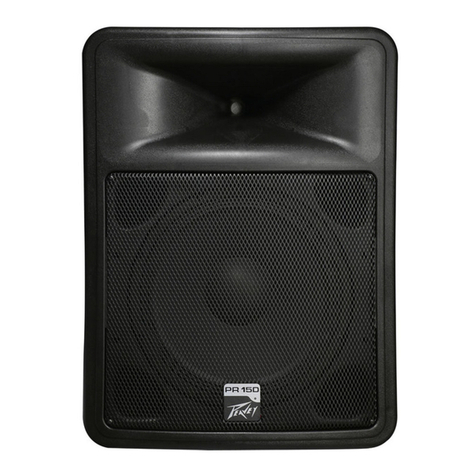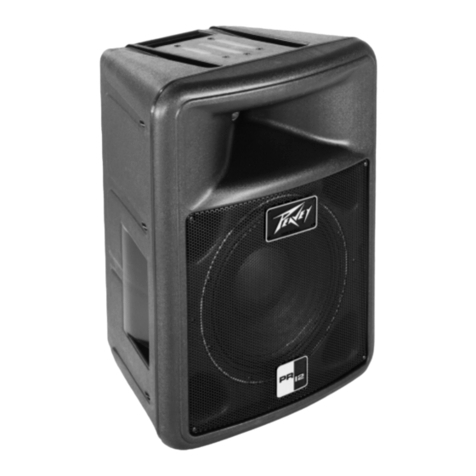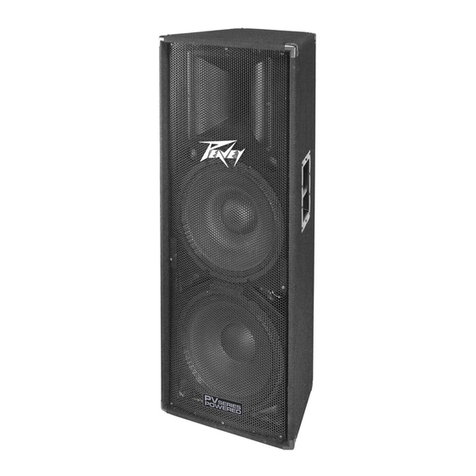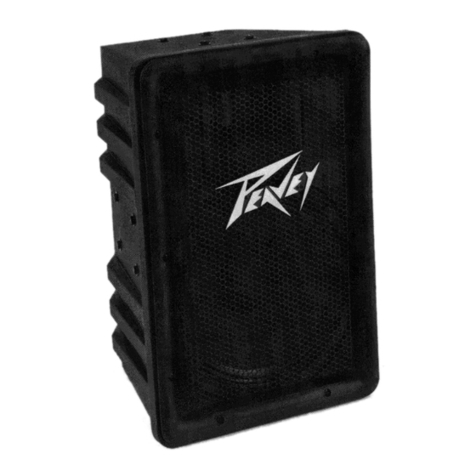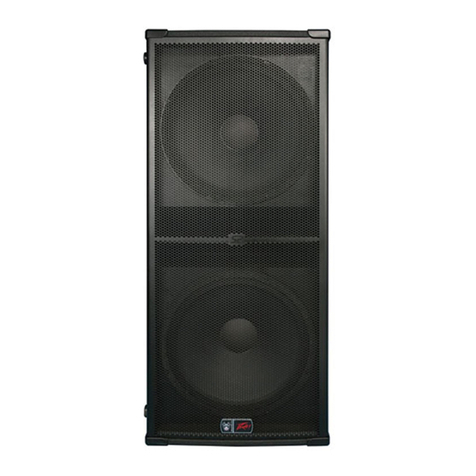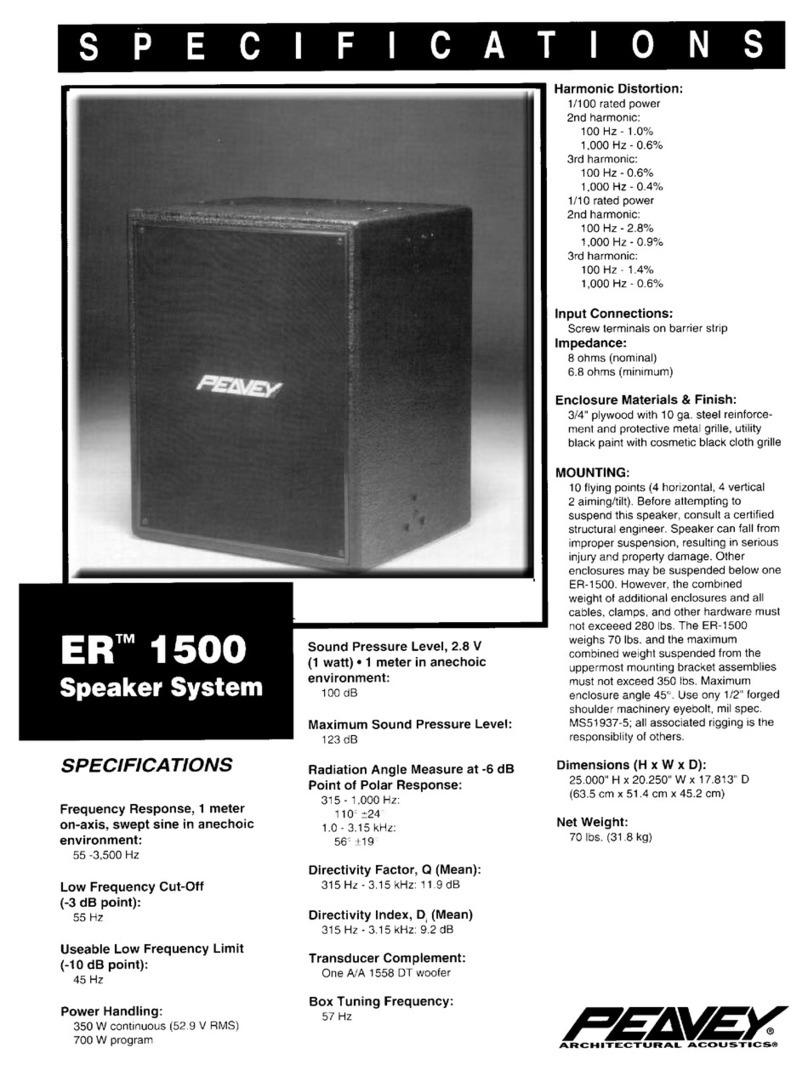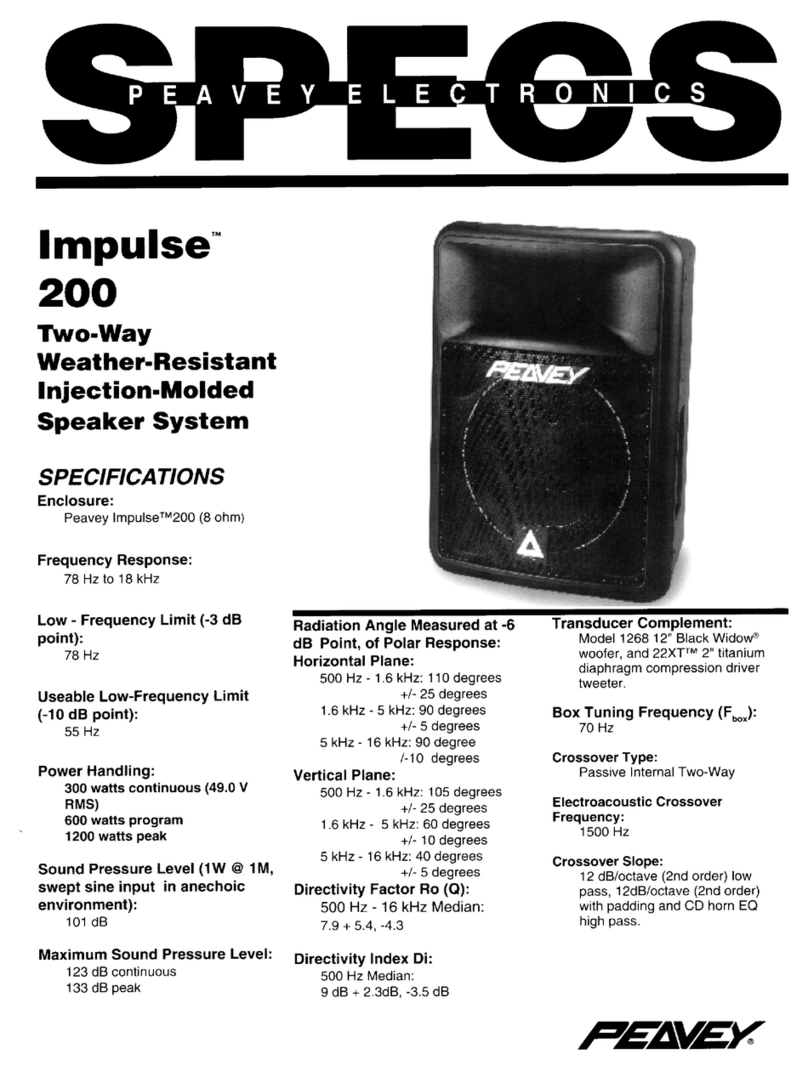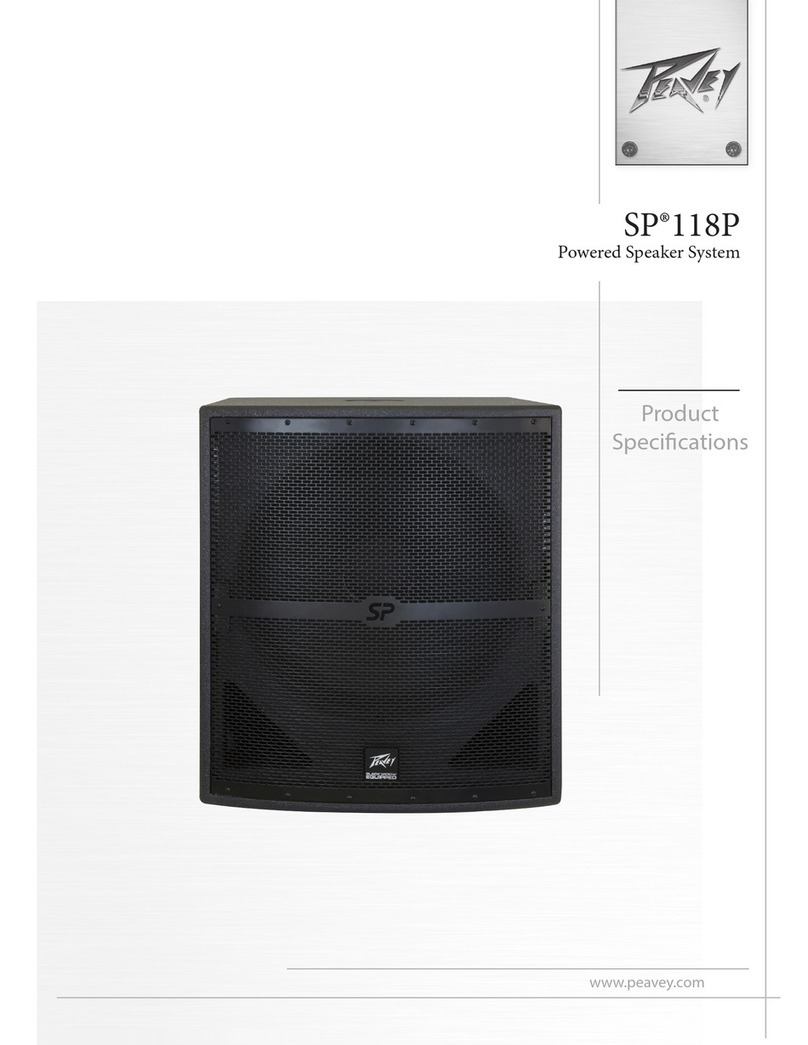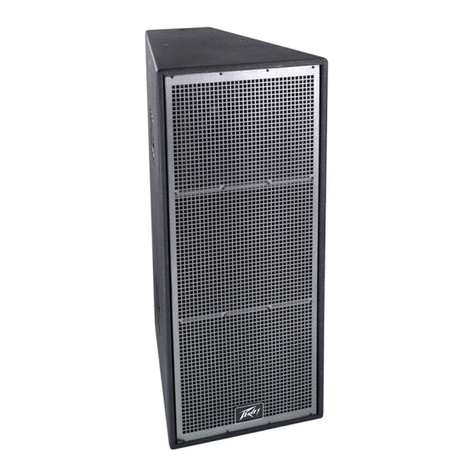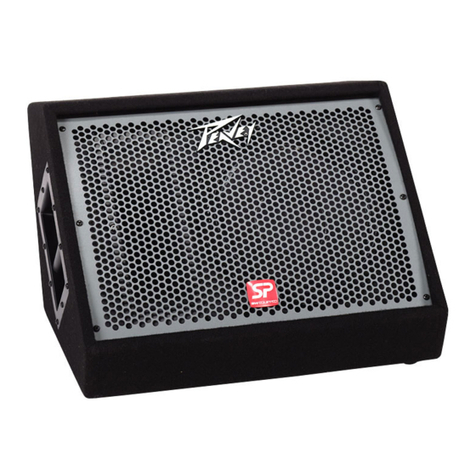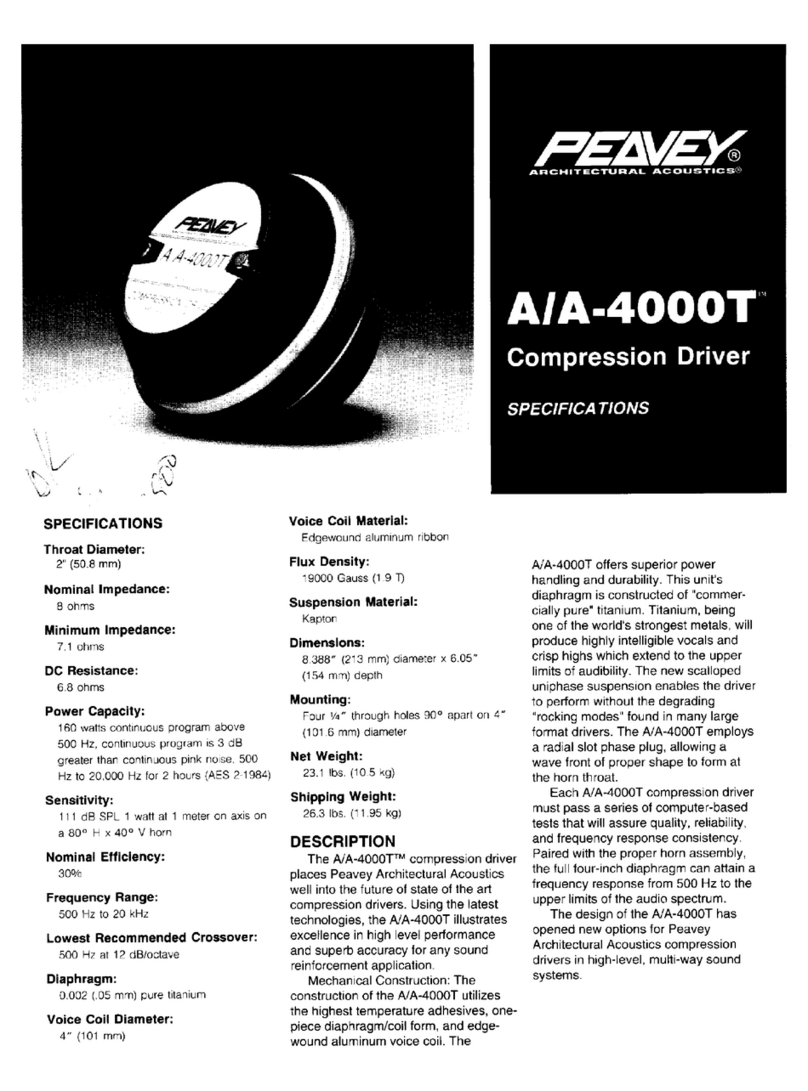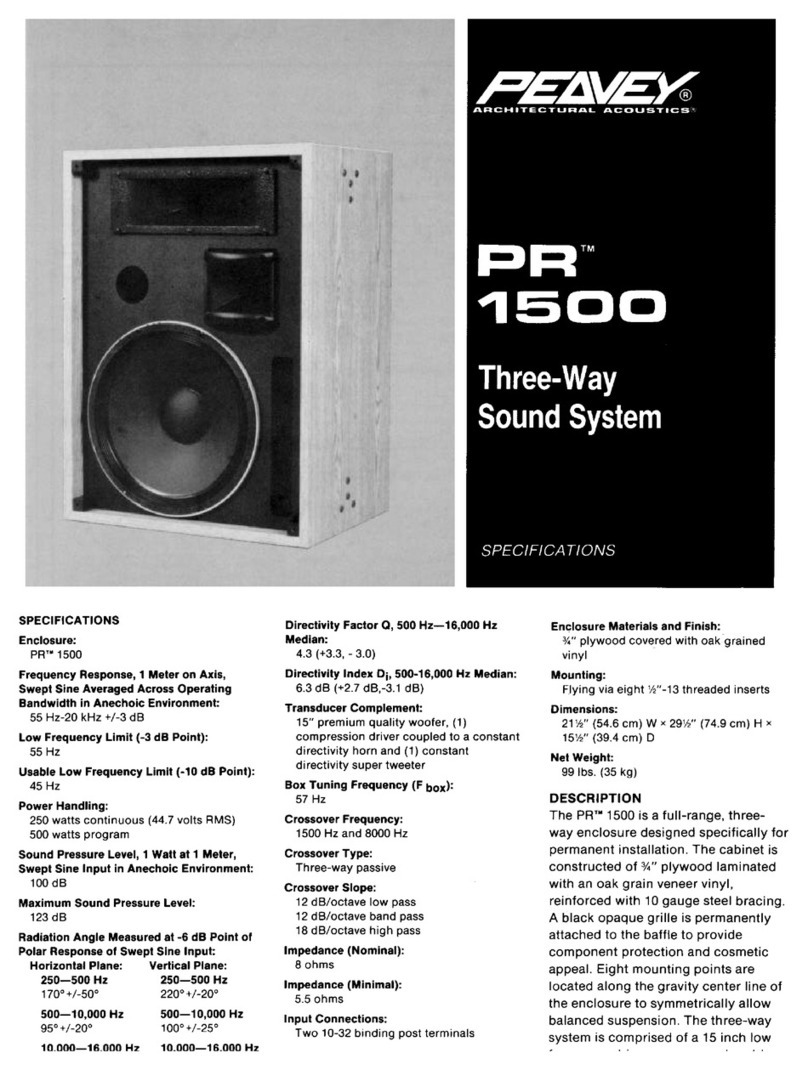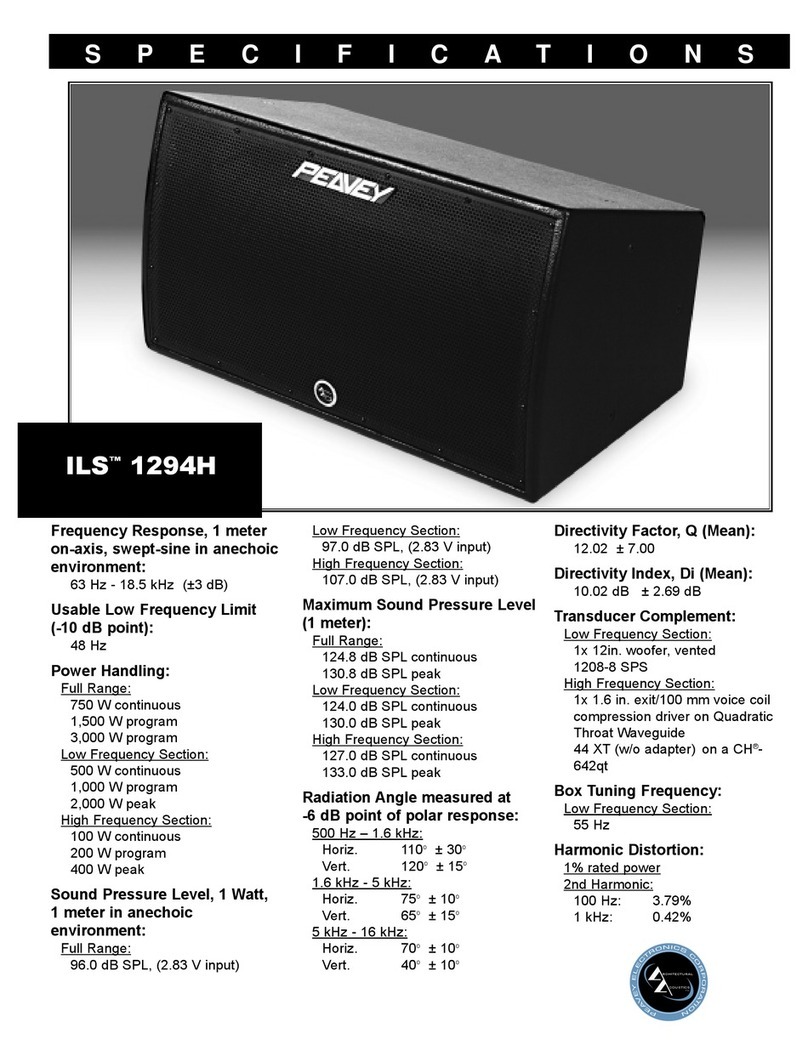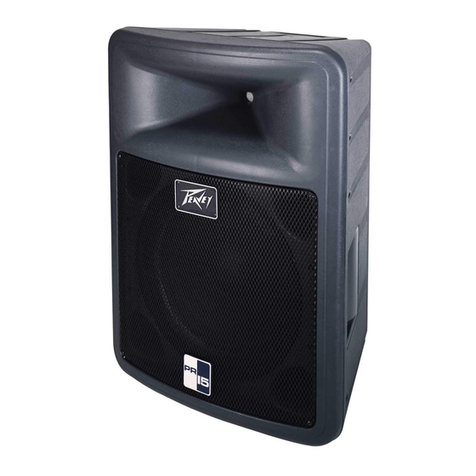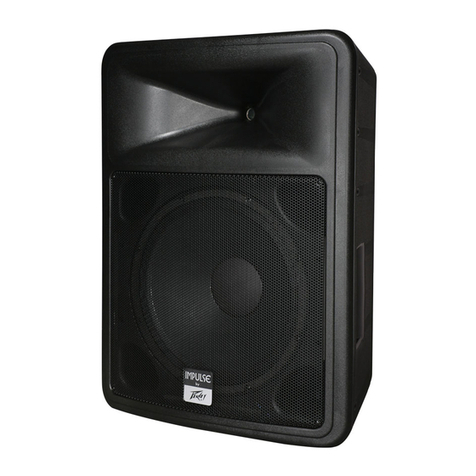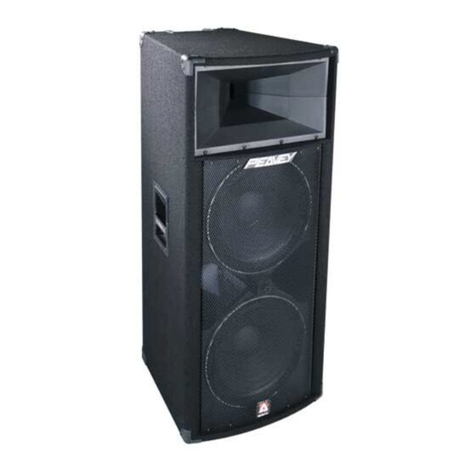10
HHuumm oorr BBuuzzzz
If the PR™12P is producing a hum or buzz, this can be AC outlet related. Try plugging the PR 12P into a
different AC outlet. Sometimes, if a different circuit (brea er) is used for the mixer and the PR 12P, it can
cause hum problems.
Ensure that shielded cables have been used to route the signal to the PR 12Ps inputs. If spea er cables
with 1/4" plugs are used as input cables instead of shielded cables, they will be prone to hum or buzz.
Hum may be ground loop related. Try lifting the ground connection at the spea er end of the signal cable if
it is a balanced signal cable. Chec any input changes carefully by first turning down the volume control,
plugging and unplugging cables, or lifting the shield ground at the spea er end.
Chec to ma e sure light dimmers are not on the same circuit as the PR 12P, the mixer or any source
devices. If light dimmers are used, then it may be necessary to turn them full ON or full OFF to eliminate or
reduce hum. This is a typical AC wiring/light dimmer interference problem, not a design flaw of the PR 12P.
The third wire (ground plug) on the AC plug should NEVER be removed or bro en off.
DDiissttoorrtteedd oorr FFuuzzzzyy SSoouunndd
First, ensure the mixer (signal source) is not clipping or being overdriven. Ma e sure the volume control/s
(7) and (9) on the PR 12P have not been set too low.
Chec that the input plugs are fully seated in the input jac s (5) and (8) on the rear panel of the PR 12P.
Ensure that the proper MIC/LINE PAD setting is being used (6) for line-level signals, or that a power amp
has not been plugged into one of the input jac s of the PR 12P.
If an extension cord is being used to provide the AC power to the unit, ensure that it is of sufficient
current capacity and that it is not also being used to supply power to any other device.
The PR 12P has built-in EQ to extend and smooth the natural response of the spea ers in the system.
Bass boost and HF EQ have been applied and the system has a nominally flat response, so it should
require little, if any, additional EQ. If excessive additional bass boost or HF boost have been added
externally to the PR 12P, it could cause premature overload at high SPL. Reduce the amount of any
external (mixer, rac ) EQ and see if that clears up the distortion.
Finally, realize that even though the PR 12P is a powerful and high output unit, it does ultimately have
limits, and it may need additional powered units (or a subwoofer) to provide enough sound output or
coverage. In this case, try turning the mixer levels down a little to see if that clears things up.
If, after chec ing all the things listed to chec and anything else you can thin of to chec safely, and the
system still exhibits problems, carefully note all conditions and chec with your Peavey dealer for advice.
CCaarree aanndd MMaaiinntteennaannccee
Your PR 12P is a sturdy and durable product and will provide years of reliable use if properly cared for. Use
common sense and read the safety warnings to avoid hazardous operating conditions.
The unit must be disconnected from the AC power source before any wor is done on it. Refer all servicing
to qualified service personnel.
SSuunnlliigghhtt//HHeeaatt
Avoid prolonged exposure to direct sunlight, as this may cause the unit to overheat and thermally shut
off. Excessively hot operating conditions can also cause a thermal shutdown.
Do not store in extremely hot or cold conditions or extremely high humidity. Always allow unit to come to
room temperature before use.
CClleeaanniinngg
Never clean the PR 12P while plugged in or turned ON! When the unit has been fully disconnected from AC
power sources, use a dry cloth to remove soil or other dirt. Never use strong solvents on the PR 12P, as
they could damage the cabinet. Do not allow ANY fluids to drip inside the PR 12P.
